Overview Of Lo Mein And Udon Noodles
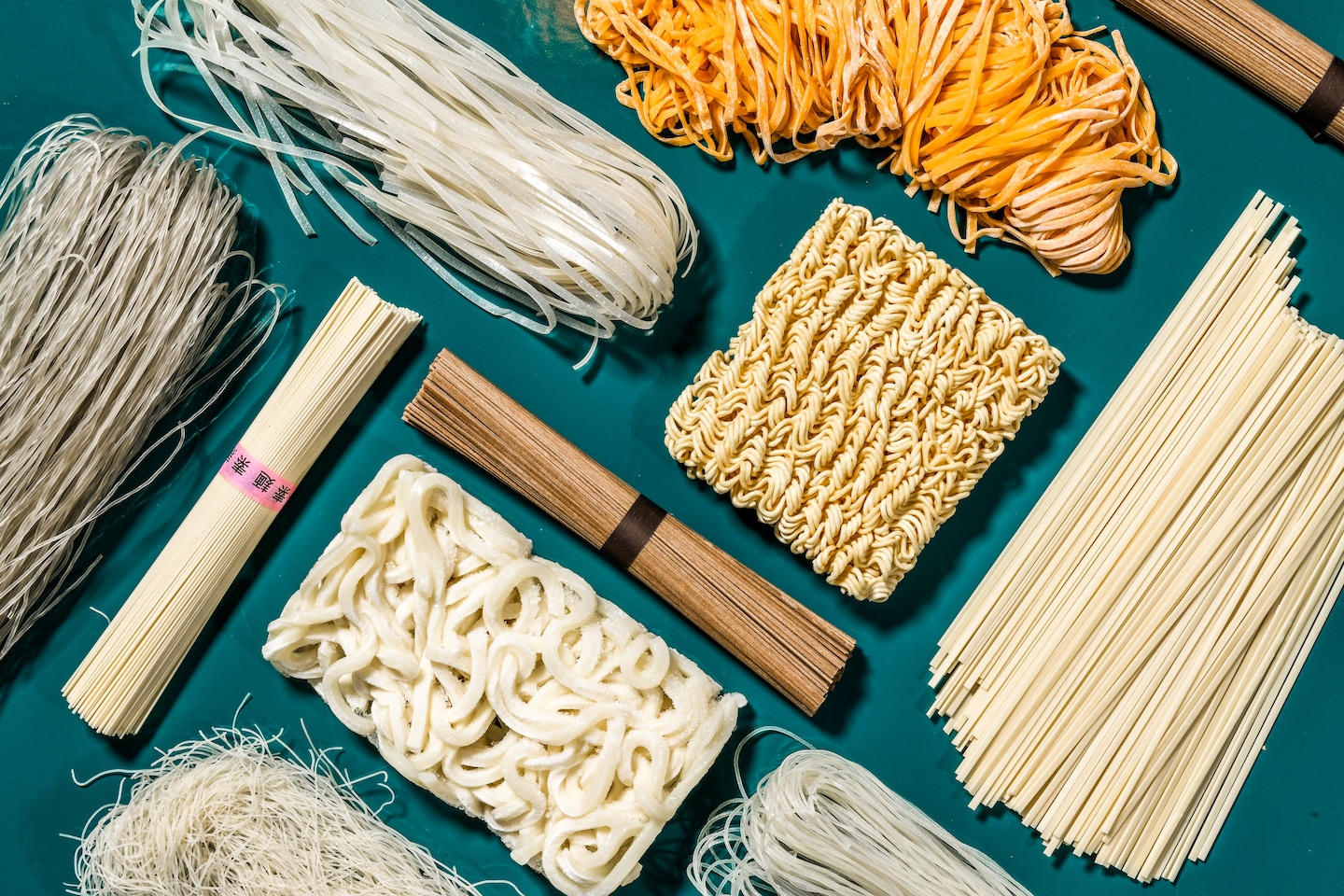
Lo Mein and Udon noodles are two popular Asian noodle varieties known for their distinctive characteristics and flavors. Lo Mein noodles originated in China and are made from wheat flour and eggs, giving them a chewy texture and a rich flavor. On the other hand, Udon noodles originated in Japan and are made from wheat flour, resulting in a thicker and softer noodle with a mild taste. Both noodles can be prepared using various cooking methods and are often served in stir-fries, soups, and other Asian dishes. Despite their similarities, the differences in ingredients and textures make each noodle unique and offer different culinary experiences.
Lo Mein Noodles: Origin And Characteristics
Lo Mein noodles have their origin in China and are widely popular in Chinese cuisine. Made from wheat flour and eggs, these noodles have a distinct chewy texture and a rich flavor. They are typically thicker and more substantial than other Asian noodles. Lo Mein noodles are versatile and can be cooked using various methods such as stir-frying or boiling. They are commonly used in stir-fry dishes and are often paired with a savory sauce and a variety of vegetables and protein. These noodles are known for their ability to hold up well in dishes and their ability to absorb flavors.
Udon Noodles: History And Texture Comparison
Udon noodles have a rich history in Japanese cuisine. These thick wheat noodles can be traced back to the 9th century when they were introduced to Japan from China. Unlike lo mein noodles, udon noodles are not made with eggs, giving them a lighter and more elastic texture. They are known for their chewy and firm consistency, making them a satisfying choice for noodle lovers. Udon noodles are often used in soup-based dishes like udon noodle soup or stir-fried dishes. They are versatile and can be enjoyed in a variety of ways, showcasing their popularity in Japanese cuisine.
Ingredients Used In Lo Mein And Udon Noodles
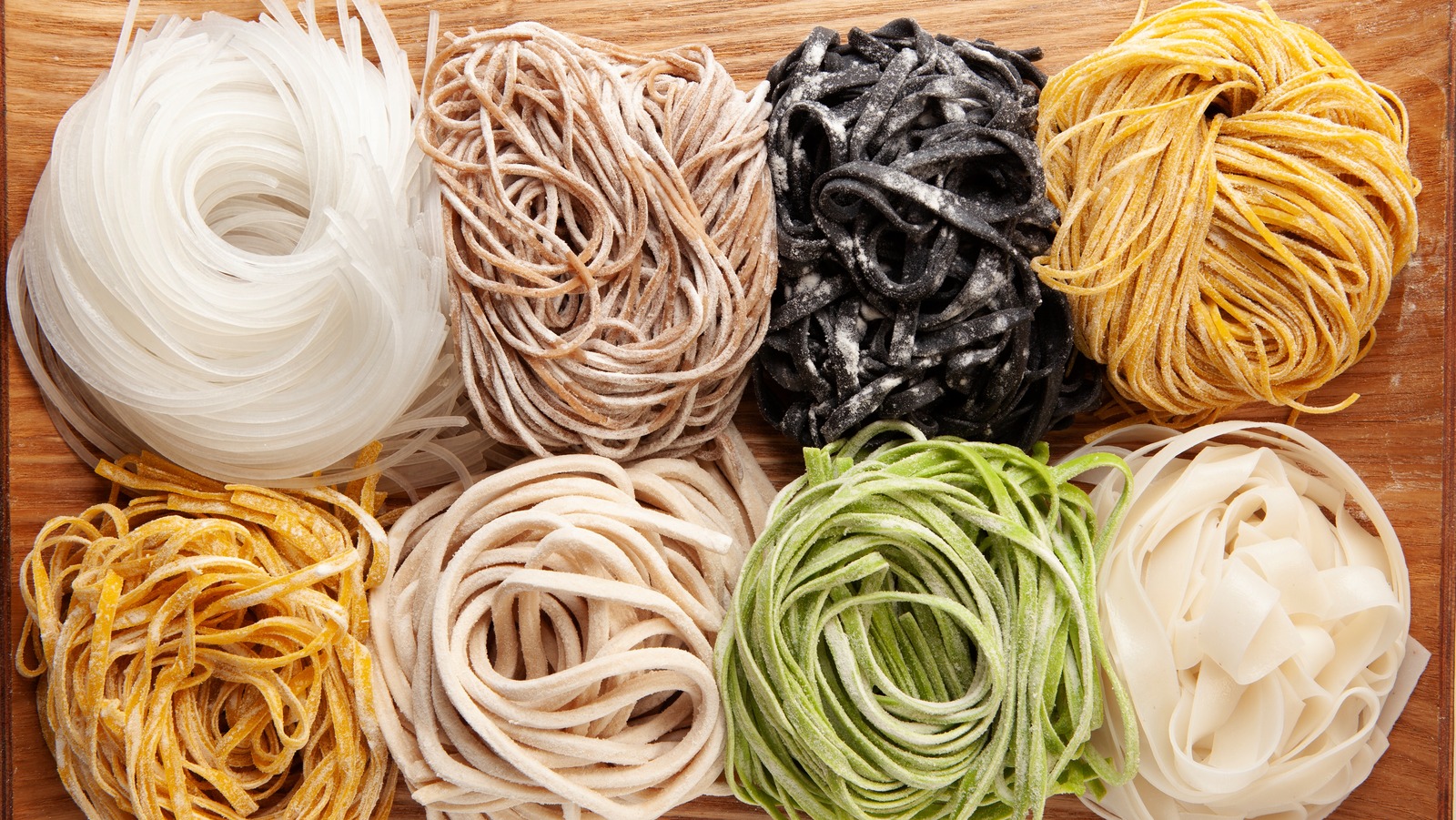
Lo Mein Noodles Ingredients and preparation methods:
- Lo Mein noodles are made from wheat flour, water, and sometimes eggs.
- The dough is kneaded until it becomes smooth and elastic before being rolled out into thin sheets.
- These thin sheets are then cut into long, thin strands, giving them their characteristic shape.
- Common variations of Lo Mein noodles include egg noodles, which add a richer flavor and chewier texture.
Udon Noodles Ingredients and cooking techniques:
- Udon noodles are made from wheat flour, water, and sometimes salt or baking soda.
- The dough for udon noodles is typically kneaded for a longer period, resulting in a denser and chewier texture.
- The dough is then rolled out and cut into thick, square-shaped noodles.
- Udon noodles are often cooked in boiling water until they reach a desired level of firmness or can be added directly to soups or stir-fry dishes.
By using different ingredients and techniques, both Lo Mein and Udon noodles offer unique flavors and textures, making them versatile and satisfying options in Asian cuisine.
Lo Mein Noodles Ingredients And Preparation Methods
Lo Mein noodles are made from a simple combination of wheat flour, water, and sometimes eggs. The dough is meticulously kneaded until it becomes smooth and elastic, allowing for a more pliable noodle. Once the dough reaches the desired consistency, it is rolled out into thin sheets. These thin sheets are then cut into long, thin strands, giving them their characteristic shape. Some variations of Lo Mein noodles include the addition of eggs, which gives them a richer flavor and a chewier texture. Lo Mein noodles are typically boiled until they reach the desired tenderness before being used in various dishes.
Udon Noodles Ingredients And Cooking Techniques
Udon noodles are made with a simple combination of wheat flour, water, and occasionally salt. These noodles have a silky texture and are known for their thick, chewy nature. Udon noodles are typically cooked by boiling them in water until they reach the desired tenderness. They are then rinsed with cold water to remove excess starch and prevent them from sticking together. Udon noodles are commonly used in broth-based dishes, such as udon noodle soup, where they absorb the flavors of the broth and provide a hearty base for various toppings and ingredients.
Cooking Methods For Lo Mein And Udon Noodles

Lo Mein Noodles can be prepared using two main cooking techniques: stir-frying and boiling. Stir-frying involves quickly cooking the noodles in a hot pan or wok with a small amount of oil, along with other ingredients such as vegetables, meats, and sauces. This method allows the noodles to absorb the flavors of the ingredients and develop a delicious, slightly crispy texture. On the other hand, Udon Noodles are commonly cooked by boiling them in water until they reach the desired tenderness. Once cooked, they are often rinsed with cold water to remove excess starch and prevent them from sticking together.
Lo Mein Noodles: Stir-frying Vs. Boiling Techniques
Lo Mein noodles can be prepared using two main cooking techniques: stir-frying and boiling. Stir-frying involves quickly cooking the noodles in a hot pan or wok with a small amount of oil, along with other ingredients such as vegetables, meats, and sauces. This method allows the noodles to absorb the flavors of the ingredients and develop a delicious, slightly crispy texture. On the other hand, boiling the Lo Mein noodles in water until they reach the desired tenderness is a simpler method. This technique is often used when the noodles will be added to soups or stir-fried separately from the other ingredients.
Udon Noodles: Broth-based Vs. Stir-frying Preparations
Udon noodles can be prepared in two different ways: broth-based and stir-frying. In the broth-based method, the noodles are cooked in a flavorful soup broth, which can be made with ingredients like soy sauce, dashi, and mirin. This results in a comforting and heartwarming dish, often garnished with ingredients like green onions, tempura, and kamaboko. On the other hand, stir-frying udon noodles involves cooking them in a hot pan or wok with vegetables, meats, and sauces. This method creates a deliciously crispy texture and allows the noodles to absorb the flavors of the other ingredients. Whether you prefer a comforting bowl of udon soup or a flavorful stir-fried dish, udon noodles can be enjoyed in a variety of preparations.
Flavor Profiles Of Lo Mein And Udon Noodles

Lo Mein noodles have a rich and savory flavor profile, often infused with the umami flavors of soy sauce, garlic, and ginger. They can be seasoned with a variety of ingredients, such as sesame oil, oyster sauce, and hoisin sauce, to create a depth of flavors. Udon noodles, on the other hand, have a more subtle and slightly sweet taste. They are commonly paired with soy-based sauces and can be enhanced with toppings like bonito flakes or tempura. Both noodles offer a delicious canvas for a variety of flavors, allowing for endless culinary creativity.
Lo Mein Noodles: Popular Seasonings And Sauces
Lo Mein noodles are known for their rich and savory flavor, which is enhanced by the use of popular seasonings and sauces. Some common seasonings include soy sauce, garlic, and ginger, which infuse the noodles with delicious umami flavors. Sesame oil adds a nutty aroma, while oyster sauce adds depth and complexity. Hoisin sauce, with its sweet and tangy taste, is another popular choice. These seasonings and sauces can be combined in various ways to create different flavor profiles, allowing for endless possibilities when it comes to preparing Lo Mein noodles.
Udon Noodles: Traditional Toppings And Flavor Combinations
Udon noodles are often served with traditional toppings and flavor combinations that enhance their broth-based dishes. Some of the popular toppings include tempura, which adds a crunchy texture, and green onions, which provide a fresh and aromatic flavor. Other common toppings include sliced Kamaboko (fish cake), Nori (seaweed), and grated ginger. For additional umami flavor, bonito flakes and sesame seeds are sprinkled on top. These traditional toppings, along with the rich and savory broth, create a harmonious blend of flavors that make udon noodles a delectable and satisfying meal.
Nutritional Value Of Lo Mein And Udon Noodles
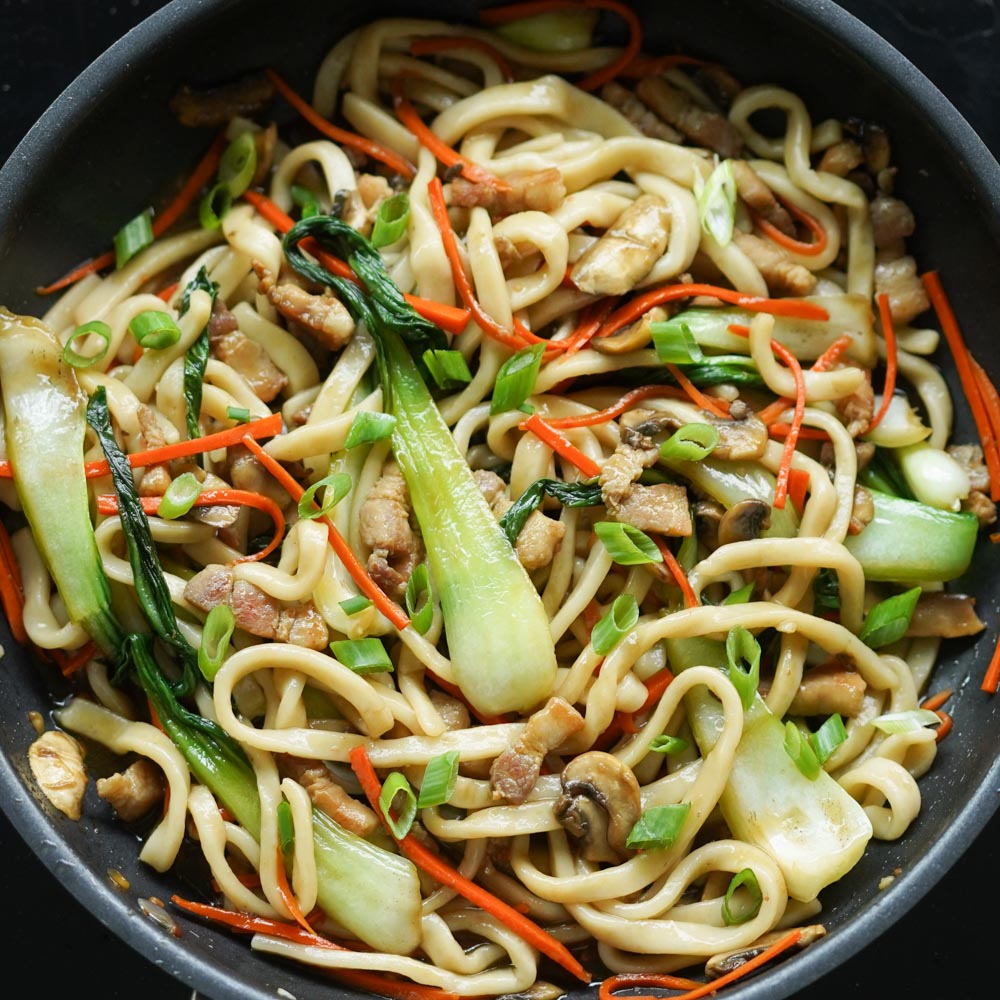
Lo Mein and Udon noodles have distinct nutritional profiles. Lo Mein noodles tend to be higher in calories and fat due to the addition of oil in the stir-frying process. However, they also provide a good source of carbohydrates and protein. On the other hand, Udon noodles are lower in calories and fat, making them a healthier option. They are rich in complex carbohydrates and contain a moderate amount of protein. Both noodles can be enjoyed as part of a balanced diet, but individuals watching their calorie and fat intake may prefer Udon noodles.
Lo Mein Noodles: Caloric Content And Key Nutrients
Lo Mein noodles are known for their delicious taste and satisfying texture. They do tend to be higher in calories compared to udon noodles due to the addition of oil in the stir-frying process. On average, a serving of Lo Mein noodles contains around 400-500 calories. However, they also provide a good source of carbohydrates and protein. These noodles are rich in iron, which is important for oxygen transportation in the body, and vitamin B-complex, which helps support energy production. However, individuals watching their calorie and fat intake may want to consume Lo Mein noodles in moderation.
Udon Noodles: Health Benefits And Dietary Considerations
Udon noodles offer several health benefits and are a great addition to a balanced diet. These thick wheat noodles are low in fat and cholesterol-free. They provide a good source of carbohydrates, which are essential for energy production. Udon noodles also contain some essential minerals such as calcium and phosphorus, which contribute to bone health. However, it is important to note that udon noodles may not be suitable for those with gluten sensitivities or celiac disease, as they are made from wheat flour. Additionally, the calorie content of udon dishes can vary depending on the preparation method and ingredients used. It is important to consider portion sizes and choose healthier cooking methods, such as stir-frying or steaming, to limit added fats and excessive sodium.
Conclusion
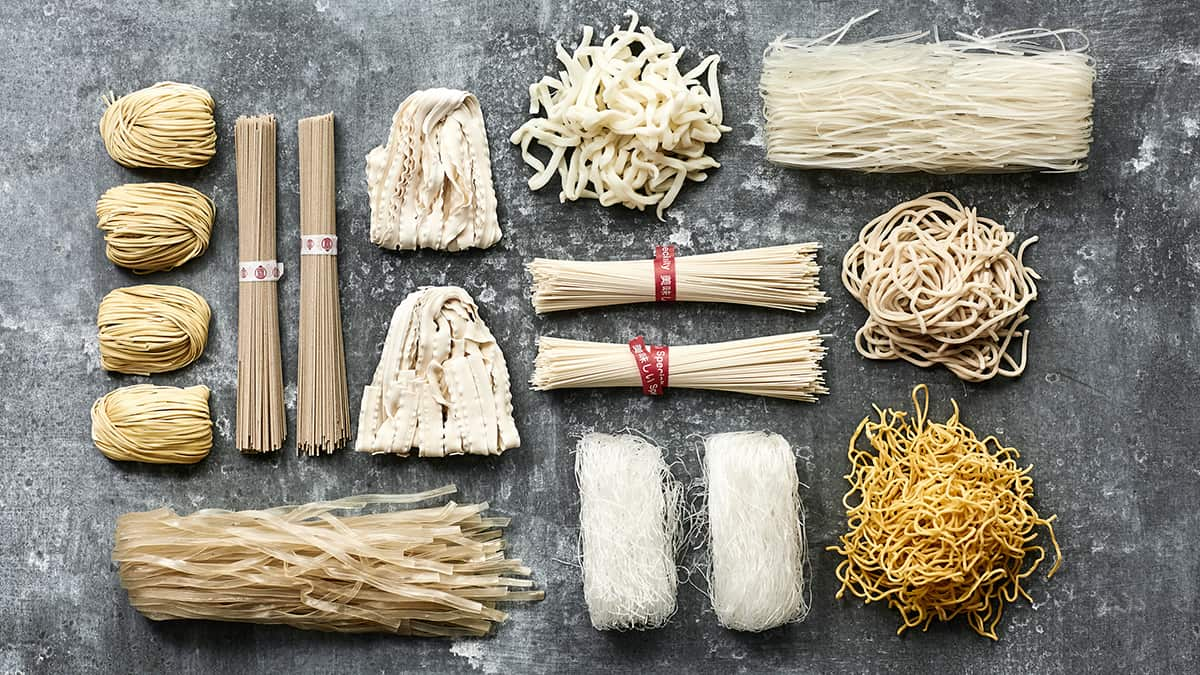
In conclusion, Lo Mein and Udon noodles are two distinct Asian noodle varieties that offer unique flavors and textures. While Lo Mein is known for its soft and chewy texture, Udon noodles have a more elastic and substantial bite. The choice between the two depends on personal preference and the desired dish. Both noodles can be prepared in various ways, from stir-frying to boiling or adding them to soups. With their versatility and wide range of flavors, Lo Mein and Udon noodles are sure to satisfy any noodle lover’s cravings.
Contrasting Characteristics And Serving Suggestions For Lo Mein And Udon
Lo Mein and Udon noodles have contrasting characteristics that make them unique in taste and texture. Lo Mein noodles are soft and chewy, perfect for absorbing the flavors of stir-fried dishes. On the other hand, Udon noodles are thick and chewy, providing a hearty bite.
When it comes to serving suggestions, Lo Mein noodles are commonly paired with vegetables, meat, and savory sauces in stir-fry dishes. Udon noodles, on the other hand, are traditionally served in broths with toppings like tempura, green onions, and fish cakes. Both noodles can also be enjoyed in cold dishes or added to soups, offering endless possibilities for delicious Asian-inspired meals.
Recommendations And Final Thoughts
In conclusion, both Lo Mein and Udon noodles offer unique characteristics and culinary possibilities. Here are some recommendations and final thoughts:
- Try both Lo Mein and Udon noodles to experience the contrasting textures and flavors they bring to a dish.
- Experiment with different ingredients and sauces to create your own personalized Lo Mein or Udon noodle recipe.
- Consider pairing Lo Mein noodles with stir-fried vegetables and savory sauces for a flavorful meal.
- Explore traditional Udon noodle dishes by serving them in broths with toppings like tempura, green onions, and fish cakes.
- Don’t be afraid to get creative and incorporate these noodles into cold dishes or soups for added variety.
Overall, whether you prefer the soft and chewy Lo Mein or the thick and hearty Udon, both noodles are sure to satisfy your Asian cuisine cravings. Enjoy exploring the world of Asian noodles and discovering your favorite dishes!
FAQ About Lo Mein Vs Udon: Contrasting Asian Noodle Varieties
Q: What is the main difference between Lo Mein and Udon noodles?
A: The main difference lies in the type of noodles used. Lo Mein noodles are thin egg noodles, while Udon noodles are thick and chewy wheat noodles.
Q: How are the textures of Lo Mein and Udon noodles different?
A: Lo Mein noodles are softer and more delicate, while Udon noodles have a chewy and springy texture.
Q: Are there specific dishes where Lo Mein is traditionally used compared to Udon noodles?
A: Lo Mein is commonly used in stir-fried dishes with vegetables and meat, while Udon noodles are often featured in soups like Japanese Ramen or Nabeyaki Udon.
Q: Can both Lo Mein and Udon noodles be used interchangeably in recipes?
A: While some recipes may allow for interchangeable use, the texture and taste may be altered. It is generally recommended to stick with the specific noodle type suggested in a recipe.
Q: How are Lo Mein and Udon noodles traditionally prepared or cooked?
A: Lo Mein noodles are usually boiled and then stir-fried, while Udon noodles are typically boiled and served in soups or stir-fried with a thicker sauce.
Q: Which noodle type is more commonly found in Asian restaurants outside of Asia?
A: Lo Mein noodles are more commonly found in Asian restaurants outside of Asia due to their versatility in stir-fry dishes. Udon noodles are also popular but are primarily featured in Japanese cuisine.
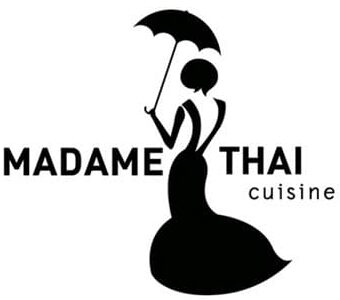
Madame Thai Cuisine is not just a restaurant; it’s a culinary journey through Thailand’s vibrant and diverse flavors. Our story began with a passion for sharing the authentic tastes of Thailand with the world. Situated in the heart of [location], Madame Thai Cuisine has been a beacon of Thai culinary excellence since [year of establishment]. Our commitment to using only the finest and freshest ingredients, combined with traditional cooking techniques, has earned us a reputation as a go-to destination for exquisite Thai dining.